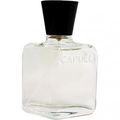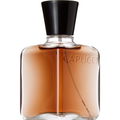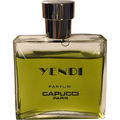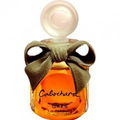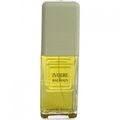03/16/2025

Jakoparfum
19 Reviews
Translated
Show original

Jakoparfum
2
The olfactory austerity of the 60s
The 1960s were a very productive decade for perfumery. At last, perfume was affordable for the masses and was no longer considered a luxury and exclusive item.
The sixties were also the most artistic and influential time for the great genius Roberto Capucci. His sculptural dresses, rich in pleats, rare silks and chiffon, were presented at the first Paris fashion shows.
Graffiti and the mythical and perhaps most famous Parce Que were Roberto Capucci's first perfumes Both perfectly express the rigor, class and high quality of the fragrances of that mythical decade in which every scent seems to have a "sartorial cut", an olfactory composition so elegant and distinguished that it is breathtaking!
Graffiti expresses in detail a very original idea, even if it derives from the progenitor of many aldehydized green chypre: Miss Dior by Dior ( by Paul Vacher).
The opening notes are certainly icy, cold and sharp: a strong sparkle of aldehydes guides the entire development of the perfume. In this case, the aldehydes dominate the scene for at least the first 6 / 7 minutes. Immediately afterwards, a very elegant note of green, talcum-like lily of the valley emerges, a sort of hybridization with violet. Jasmine and rose absolute lightly emerge with a lot of grace and elegance.
This green and aldehydic composition becomes slightly warm and spicy after a while, a dry, pungent nutmeg note emerges from the initial core and introduces the second phase of the fragrance. In the second phase of development, one can recognize a change in the green aspects, which become increasingly rounder and more polite. The aldehydes lose their edgy, sharp aspect and blend beautifully with the oakmoss, the violet becomes warmer and dustier with a slightly leathery, smoky note. Sandalwood, again combined with oakmoss and patchouli, form the epilogue of this magnificent fragrance
Overall, the perfume is really so elegant and stately that it would not fit in with the synthetic and sweet fragrances of today. It doesn't fit the figure of a woman today, but it certainly represented her in those years. A free woman with an open-minded and independent spirit could wear this shocking fragrance.
Finally, Graffiti represented the art and craftsmanship of Roberto Capucci and his mythical tailoring.
There are close links to other fragrances that came later, such as Calandre, Rive Gauche and Madame Rochas. However, I think Graffiti is more original because of its boldness and emphasis on certain notes (aldehydes and oakmoss).
The sixties were also the most artistic and influential time for the great genius Roberto Capucci. His sculptural dresses, rich in pleats, rare silks and chiffon, were presented at the first Paris fashion shows.
Graffiti and the mythical and perhaps most famous Parce Que were Roberto Capucci's first perfumes Both perfectly express the rigor, class and high quality of the fragrances of that mythical decade in which every scent seems to have a "sartorial cut", an olfactory composition so elegant and distinguished that it is breathtaking!
Graffiti expresses in detail a very original idea, even if it derives from the progenitor of many aldehydized green chypre: Miss Dior by Dior ( by Paul Vacher).
The opening notes are certainly icy, cold and sharp: a strong sparkle of aldehydes guides the entire development of the perfume. In this case, the aldehydes dominate the scene for at least the first 6 / 7 minutes. Immediately afterwards, a very elegant note of green, talcum-like lily of the valley emerges, a sort of hybridization with violet. Jasmine and rose absolute lightly emerge with a lot of grace and elegance.
This green and aldehydic composition becomes slightly warm and spicy after a while, a dry, pungent nutmeg note emerges from the initial core and introduces the second phase of the fragrance. In the second phase of development, one can recognize a change in the green aspects, which become increasingly rounder and more polite. The aldehydes lose their edgy, sharp aspect and blend beautifully with the oakmoss, the violet becomes warmer and dustier with a slightly leathery, smoky note. Sandalwood, again combined with oakmoss and patchouli, form the epilogue of this magnificent fragrance
Overall, the perfume is really so elegant and stately that it would not fit in with the synthetic and sweet fragrances of today. It doesn't fit the figure of a woman today, but it certainly represented her in those years. A free woman with an open-minded and independent spirit could wear this shocking fragrance.
Finally, Graffiti represented the art and craftsmanship of Roberto Capucci and his mythical tailoring.
There are close links to other fragrances that came later, such as Calandre, Rive Gauche and Madame Rochas. However, I think Graffiti is more original because of its boldness and emphasis on certain notes (aldehydes and oakmoss).
2 Comments








 Chypre accord
Chypre accord Musk
Musk


